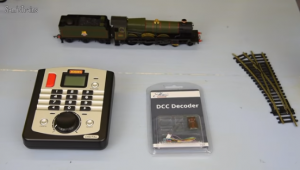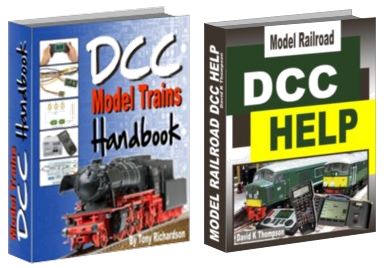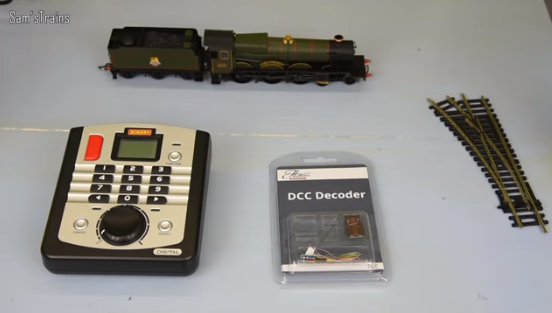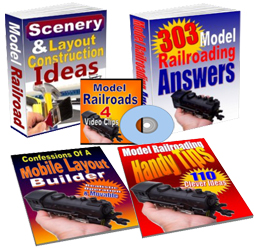If you want to convert your model railroad to DCC without buying a complete DCC set, there are some changes that you will have to make to your existing equipment, along with purchasing some new components. Keep reading to find out the benefits, and what you’ll need to do and get to have a successful conversion to DCC.
Get the advantages of DCC

DCC is short for “Digital Command Control” and is a modern method of controlling a model train setup which may include multiple locomotives, operational scenery such as drawbridges, reversing sections and more. DCC operates using pulsed electrical signals which have digital information encoded onto them and a decoder is required on the operating equipment in order to respond appropriately to the commands from the operator.
Using DCC, the operation of multiple locomotives can be independently controlled including their speed and direction, along with their features such as headlights and smoke generators. Such advanced control using an analog (DC) system entails additional, completely independent and highly complex power schemes to control multiple locomotives independently.
Another advantage of DCC over DC would be that the control of all components of the model train setup is integrated. Just a single command station with an included or independent throttle can control the entire setup, which makes the control much simpler. An analog system would need multiple controllers and switches which makes the control of large setups complicated. DCC can also help in making locomotives behave more realistically. A locomotive decoder can be programmed to slow down and speed up gradually, mimicking the real live motion of the prototype.
Track Wiring Changes
The first thing to be done when you convert your model railroad to DCC is wire your layout correctly for DCC power boosters. If you have a small layout, with perhaps one or two power wires distributed around your tracks, you may be able to use a single DCC power booster for the whole layout. If this is the case, you would just connect the power outputs of the booster to all the feeds of your layout.
If your layout is large, and you have separate sections for power (also known as the home-run method of wiring), your layout is ready for DCC power. For each section (also known as “blocks”), you will need a power booster, just connect each booster to each block, and you are ready to go. With DCC, these sections are referred to as “power districts.”
If your layout is large and you are using the common-rail method of wiring, where one rail is continuous throughout the layout, you will have to modify the layout to have separate sections (as in the home-run method described above). Once you have separate power districts, you then can connect each district to it’s own DCC power booster.
DCC Equipment
“Decoder’s” are devices which can respond to the command signals that are transmitted on the tracks. Each decoder has a unique “address,” so the operator can use one command station to control a large variety of components (as long as they have a decoder associated with them). For example, each locomotive will have it’s own decoder and unique address, so running multiple locomotives becomes very simple. Station signals, locomotive steam, operating switches and couplers is all easily accomplished, because each one is uniquely addressed in the system. Another way to look at DCC is as if it were a computer network. There is one “server” which issues commands, and many “clients” which can be thought of as simple computers that each only respond to commands that are addressed to them.
When you convert your model railroad to DCC, decoders will have to be installed on each locomotive, and on any other device where you want to be able to control it from the command station.
A “DCC Power Booster” is needed for each power district on the track. If you have a simple layout, not sectioned off, then you can start with one power booster. The booster is connected to the Command station, and superimposes the digital commands issued from it, onto the power signal which is connected to the tracks.
The “command station” is where the throttle and other controls are found, and is how the operator determines what the trains and other components will be doing at any given time.
You can also purchase a command station and throttle separately, and you can purchase combination units that include throttle, command station and power booster in one package.
Putting it all together
If you want maximum control over every component in your model train setup, switching to DCC would be a very wise decision. Along with that if you started out with a basic, single train setup and now are planning to expand your setup to include more components, sticking with analog would be a disadvantage as there would be much more work needed in the form of creating new independent circuits for additional locomotives.
With some planning and homework, you can get into DCC and expand your model train hobby with great ease and have more fun.

If you are ready to go deeper into DCC Model Railroads and get the best start possible, I highly recommend this e-book.
Want some ideas for an amazing layout? Check out these fantastic tips to help you plan your layout.
Did you find this article informative? Please share it with others, using the “Tell A Friend” button, or Tweet it. Thanks!


Apparently internet cannot find your address so that I can register
……good one…….
Thanks..Bob
All fixed – try it again!
Scott
My layout is set up with dual power supplies for single engine operation on a double
mainline figure eight over and under.
It is wired with 18AWG throughout the layout.
I think I’ll need to put a power bus in. And use12AWG with18AWG drop wires.
I may have slightly over approximately30′ of double mainline.
Also, I think the use of snubbers will be appropriate here.